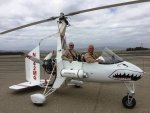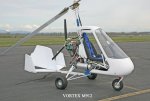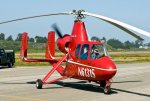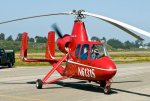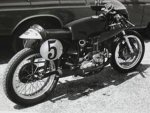No Title
Kolibri;n1142628 said:
Vance, a free-castering trailing-link nosewheel with plastic discs shimmy dampener on a gyroplane definitely is Jim Vanek's technology.
Even after 30 years, it's still not only unique, but the best gyro nosewheel today. How sad that you cannot simply credit the man for it.
A short description of the choices for a steering nose wheel on a tricycle gear aircraft.
We have two main choices for steering; linked steering or free castering with differential braking. The debate on which works best is never ending and both are used on modern aircraft.
We have two main choices for suspension that includes steering; sliding elements like a modern motorcycle fork (a single slider is the most common on aircraft) or some sort of linked suspension. There are many variations of how to lay out the links and how to dampen the travel; a simple leading or trailing are the most common layout for the links. A bending element can also be used.
For a shimmy damper we have two main choices: a friction damper or a hydraulic dampener. A friction damper can be some sort of clamp or some sort of friction disk with a disk being the most common. A hydraulic damper can be a hydraulic cylinder pumping some medium or a circular thing with vanes.
Based on what little I know about the Sport Copter shimmy damper it is different than what we did on The Predator. The disk on The Predator is free floating, thinner and uses springs to maintain the pressure on the disk much like my 1930 Velocette.
Based on what I can see of the Sport Copter trailing link it is very different than what we did on The Predator.
I feel Jim Vanek is very innovative and I like the quality of the work he does.
He most certainly did not invent free castering nose wheels, disk shimmy dampeners or trailing link suspension.
I don't know if he is the first to try these three choices all together on a gyroplane.
I don't have the arrogance or enough time flying a Sport Copter gyroplane to pronounce they have "the best gyro nose wheel today."
A free castering nose wheel is my preference; that does not make it the best.
A trailing link without suspension damping would not be my first choice for a nose gear on a gyroplane.
A disk shimmy damper has some limitations. I would not use one on a road racing sidecar. It appears to me be acceptable in a gyroplane.

